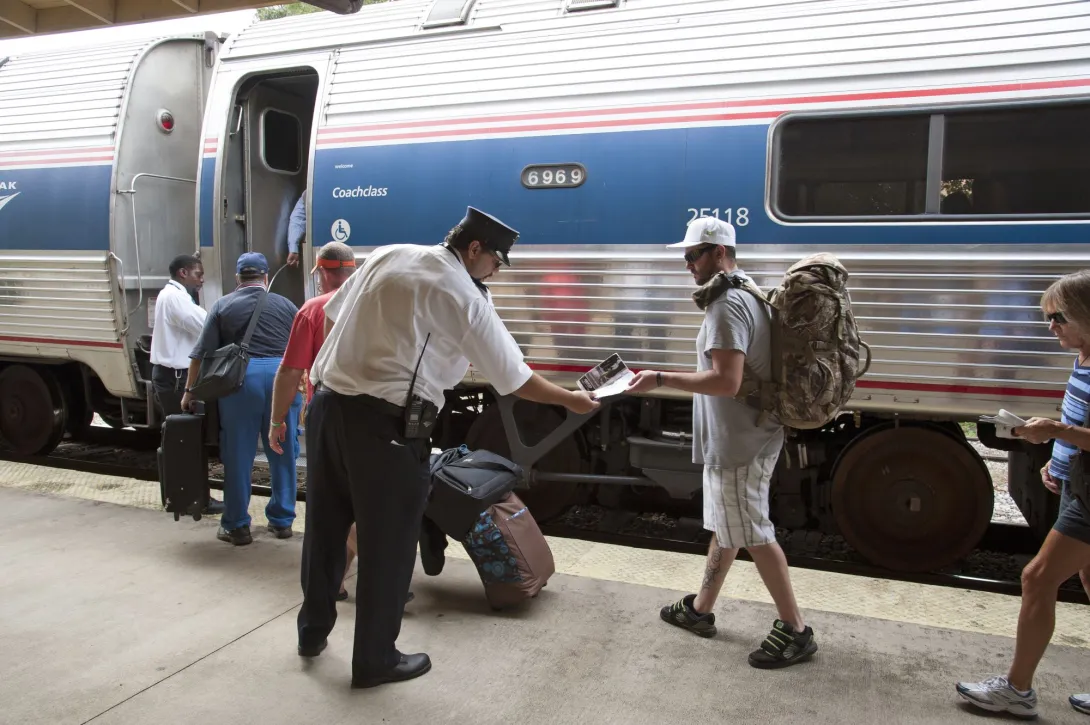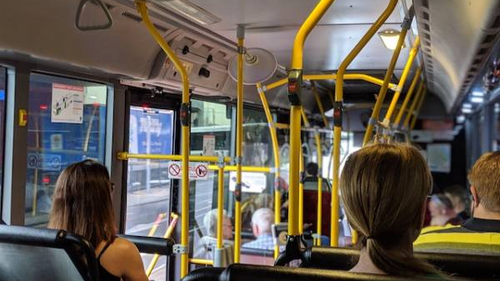Traveling Between States in the U.S. Without a Car

If you don’t own a car and want to travel between states or between cities in your state, there are three major options: airplane, train, or bus.
Airplane
Air travel is usually the most expensive way to travel between states, though it may be the only realistic option depending on how far you are going and how quickly you need to get there. If you live near a large airport, there will be more flight options, and you may find discounted and direct flights to your destination. If you live near a smaller regional airport or your destination is a smaller airport, flights may be more expensive. Air travel can also be disrupted at any time of the year by heavy rain, wind, thunderstorms, ice, fog, or snow.
The best time to find the lowest airline tickets changes every year and can vary according to location or time of year. However, it is usually one to three months in advance. Buying airline tickets a few days or a few weeks before a flight will almost always be much more expensive, and direct flights are, in general, more expensive than flights where you switch planes (called a layover) to get to your destination. When deciding whether to fly, it is essential to factor in the additional fees for luggage that airlines charge, as well as the cost and time required to get to and from airports.
Train
The only long-distance interstate train service in the United States is called Amtrak, which is partly owned and operated by the U.S. government. Train service in the U.S. is not as developed or as fast as it is in some countries, and can be expensive. However, if you live on the East Coast of the United States, especially between Boston and Washington, D.C., and there is an Amtrak station near where you live and where you are going, train service is usually less expensive, more convenient, and sometimes can be faster than flying. If your destination is a smaller city in your state, the next state, or a few states away, Amtrak may also be a good travel option. View a map to see if your destination is on an Amtrak route. Some states, especially on the East Coast, also have regional rail service connecting cities and towns within states or even connecting neighboring states.
You can make a reservation on Amtrak through its website, 24 hours a day, by phone at 1-800-USA-RAIL (1-800-872-7245), or at a staffed Amtrak station. You will need a credit or debit card with a credit card logo (like Visa or Mastercard) and an email address to purchase your ticket. After you buy your ticket, you will receive a PDF attachment in an email. When you are on the train, you will show the PDF ticket on your phone to the conductor. Make sure your phone battery is charged when you board the train.
If possible, it is recommended to buy your Amtrak tickets at least a month in advance to take advantage of lower fares. Buying tickets several days or weeks before the travel date, during U.S. holidays, or high-demand periods is usually more expensive.
Bus
Bus travel is typically the most affordable way to travel between states, with routes that reach almost every city and town in the United States. Traveling by bus can be slow, but it is comfortable and can take you to locations that are not accessible by air or train. Two major bus services offering routes across the United States are Flixbus and Greyhound. The extensive networks of Flixbus and Greyhound can get you almost anywhere in the United States inexpensively when compared to flying, train, or driving. Other interstate bus services are Peter Pan, Megabus, and Lux Bus. You can purchase tickets on these bus services by visiting their websites. There are also private bus companies that offer routes between cities in specific regions of the U.S., like the Northeast, Mid-Atlantic, Midwest, or West Coast.
Which Type of Travel Should I Choose?
Comparing the costs and travel times for air, train, and bus will save you money and help with your planning. Sometimes a combination of air, train, or bus may even be your best choice. And remember, to get the best price for travel, it's best not to wait until the last minute. If possible, always reserve your tickets in advance.


